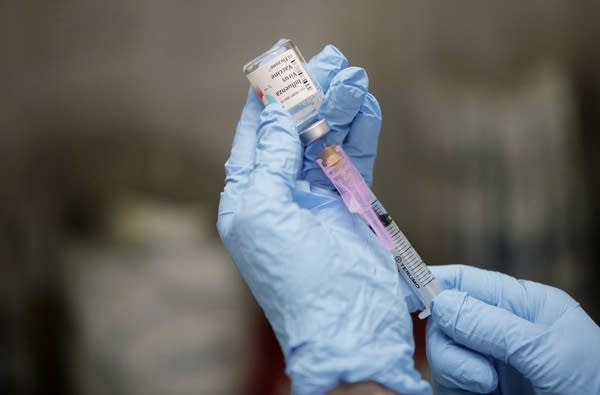High-risk groups to receive H1N1 vaccine first

By the end of this week, some Minnesota pediatric clinics are expected to receive their first shipments of H1N1 influenza vaccine, but supplies are so limited at this point, state health officials have asked doctors only to offer the vaccine to the most medically-fragile kids.
In fact, the Health Department is still not revealing the specific locations receiving the vaccine because they don't want people to overwhelm those clinics.
The whole process of doling out tiny amounts of vaccine is so difficult it is delaying the shipment of vaccine to some clinics.
"I think sometimes people don't realize that," said Kris Ehresmann, director of the Infectious Disease Epidemiology, Prevention and Control Division at the Minnesota Department of Health. "They think 'oh for heaven sakes how hard can it be to get this vaccine out the door?' And it's actually a lot harder than it seems to do it right and to do it appropriately and ethically."
Create a More Connected Minnesota
MPR News is your trusted resource for the news you need. With your support, MPR News brings accessible, courageous journalism and authentic conversation to everyone - free of paywalls and barriers. Your gift makes a difference.
Ehresmann is one of five people at the agency who make decisions each day on where to send the H1N1 vaccine.
Last week, Ehresmann's group sent 28,000 doses of nasal spray vaccine to health care workers who had direct-patient contact. This week the agency wants to broaden its immunization campaign.
"We'd like to start to try and focus on the pediatric population and in particular some of the highest-risk pediatric patients," Ehresmann said.
"We'd like to start to try and focus on the pediatric population and in particular some of the highest-risk pediatric patients."
The federal government says Minnesota can order another 30,000 doses this week. Approximately half of that allotment includes injectable vaccine which can be given to very young children and people with underlying health conditions.
Pediatric clinics that serve as regional hubs for the highest-risk patients will be among the first to receive the next shipment of vaccine. But the Health Department also wants to get the vaccine out to rural areas.
Ehresmann said that process is going slower because the Health Department is waiting for some doctors to submit details about the type and amount of vaccine they think they need for their patients. Once they hear back from enough of them, Ehresmann and her colleagues will select clinics from that pool.
The Health Department wants to distribute the vaccine fairly around the state. "In some cases we may have to go to random numbers just because, even when we've looked at all that, how you can you pick between a couple of equally important pediatric clinics?" Ehresmann said.
Clinics that are selected this week will get at least 50 to 100 doses of the vaccine in their first shipment; a supply that probably won't very last long.
But more vaccine is being released by the federal government every day. So Ehresmann encourages parents in particular not to get too anxious about the situation, especially if their children are relatively healthy.
"You know if your child isn't one of the kids that's being contacted, that's not a bad thing," Ehresmann said. "I mean there are kids with many, many health concerns that are medically fragile, and those are the kids that would need to get that initial vaccine. So if you're not someone that's contacted, you can be grateful."
By early November, Ehresmann predicts there will be enough vaccine available that parents should have no problem getting their child an appointment for a flu shot. As for everyone else, Ehresmann continues to recommend patience.
"For the vast majority of the state it's like we don't see any vaccine," she said. "There's all this talk and nothing's happening, and I'm hoping that in the next week or so the allocations will be such that the average person is going to start to feel like they saw a glimmer of hope for getting vaccine."
Another big decision remaining for Ehresmann and her team is they still have to figure out the most efficient way to vaccinate pregnant women. That population has been hit particularly hard by the virus and represents a disproportionate share of hospitalizations and deaths.
Ehresmann said the Health Department is working on a strategy for getting vaccine to that population as quickly as possible.
